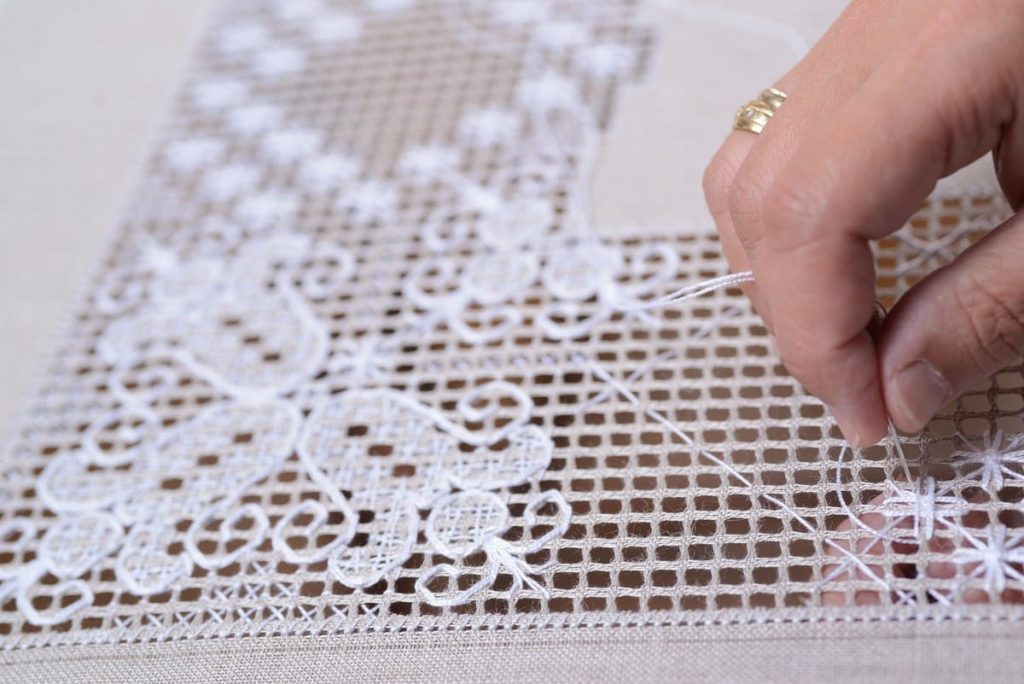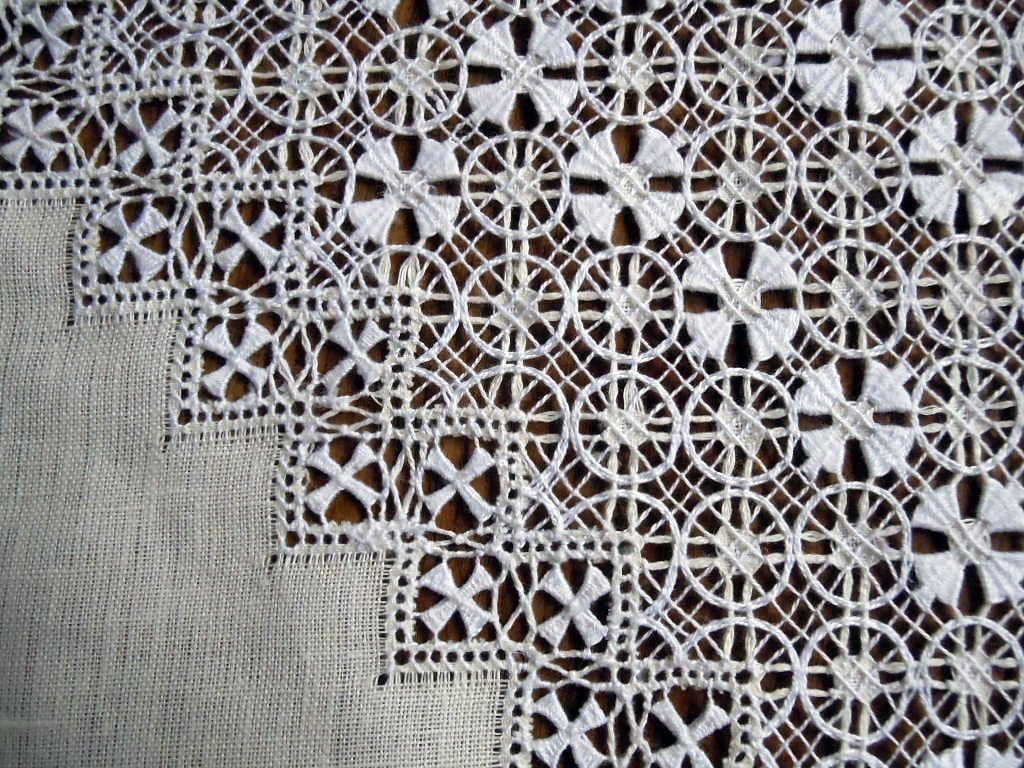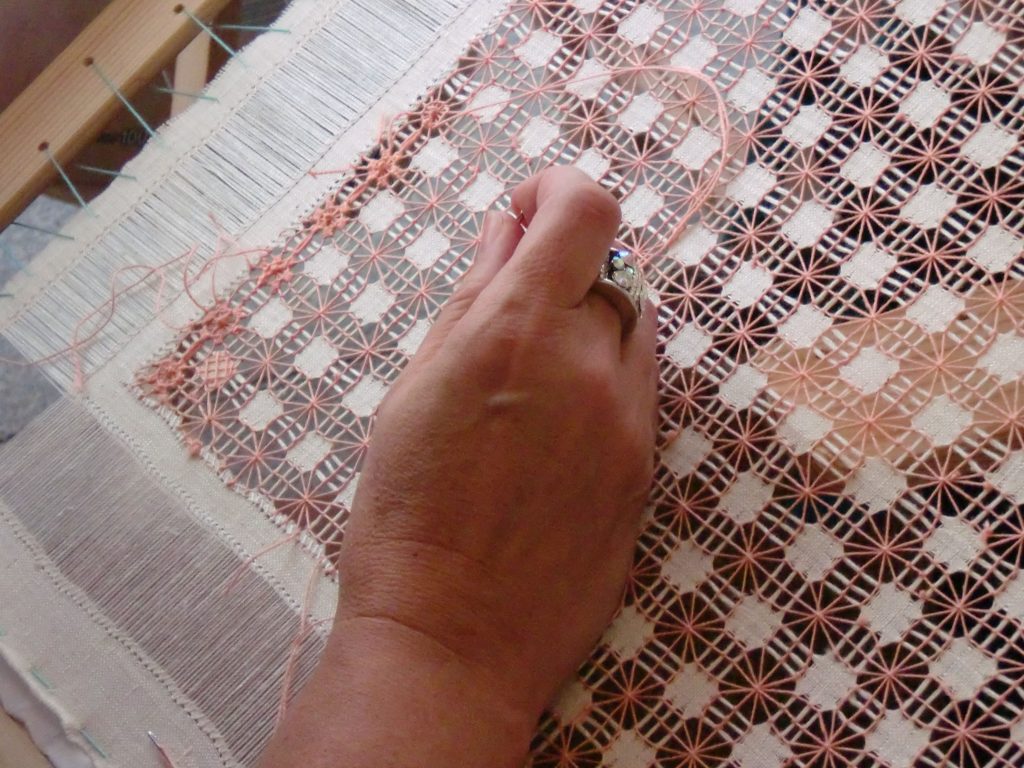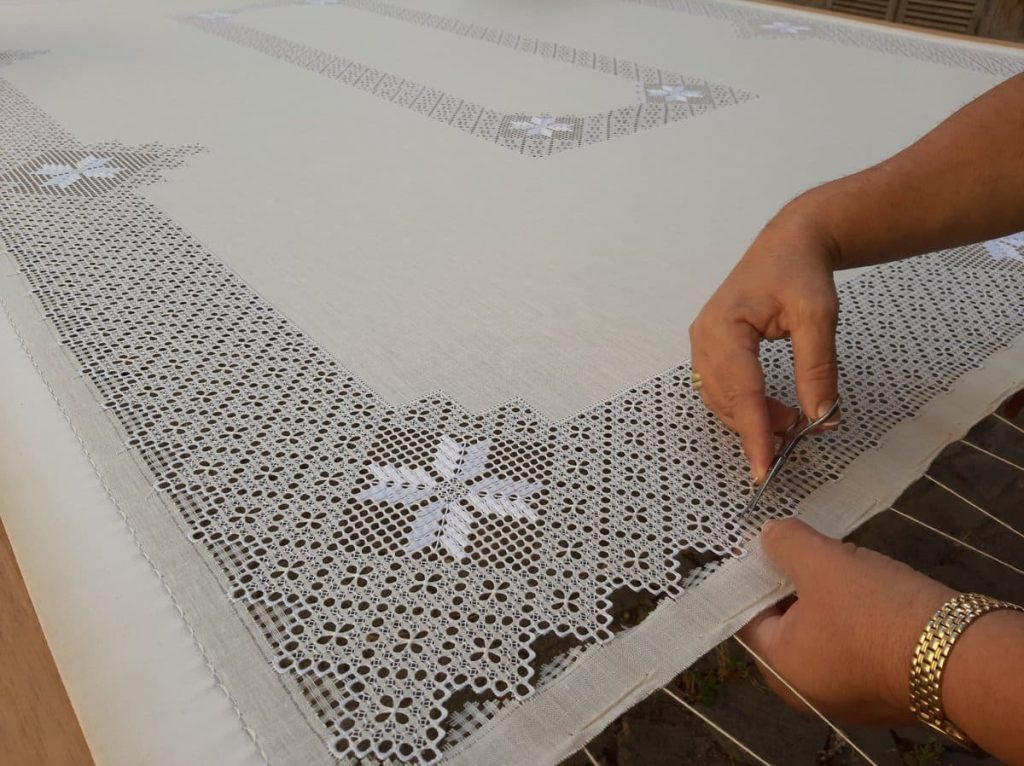Canarian fretwork is a traditional craft of the Archipelago and is considered one of the finest and most difficult of all Canarian handicrafts.
This art has always been linked to the hands of women. In addition, it has been the handicraft activity with more projection of the Islands. Nowadays, Canarian fretwork continues as a tradition, although it is not the main professional activity.

History of the canary fretwork: where it arises
Canarian fretwork has its origins in the border between Portugal, Andalusia and Extremadura. At the beginning, these works were carried out as a family production until 1891 when it began to be commercially exploited, following the Madeira model.
Thanks to the demand and the success of the production, in 1901 the first fretwork export house in the Canary Islands was opened. The main export destination was London, but after the First World War, sales of fretwork fell considerably and less and less labor was needed.

This artisan activity had always been a task carried out by rural and economically disadvantaged women. However, in 1950, the Women's Section, the main promoter of this industry and its workers, was organized and the trade of Canary fretwork was reactivated. The creation of the Women's Section, around 1950, was the turning point so that the fretwork trade could be maintained and taught.
Characteristics and description of this traditional art
Among the handicraft activities of the islands, Canarian fretwork is one of the most complicated and delicate. It has been the one that has had the greatest scope since it was exported to England, the United States, Germany and France. In addition, it was able to compete against the productions of Scotland, Madeira and Japan. This was due, in large part, to the fact that the workers in this sector were women without resources, who provided very cheap labor.

Normally the businessman gave the fabric to the fretworker and two things could happen, on the one hand, that the price was fixed at that very moment, and on the other hand, when picking up the final product. It could also be through the delivery woman, who distributed the fabrics and designs among the fretworkers according to the age and skill of each one, and who finally went to pick up the completely finished fretwork to go out to sell them.
One generation's fretworkers taught the next generation's fretworkers. This apprenticeship needed to begin at a very early age due to the difficulty of this work. They did the work in a room in the house where they lived.
What is needed to make canary fretwork: materials and techniques
To make the fretwork, they needed a frame, that is, a wooden structure where the fabric was fixed. If the frame was large, they also needed some donkeys to keep it in a horizontal position. Also, the tools needed for any type of sewing work (scissors, thread spools, fretwork needles, etc.).

The most important materials for this work are linen fabrics, also known as thread fabrics. In addition, cotton threads, which can be used to make all kinds of household linen, from tablecloths and bedspreads to bread bags. The traditional Canarian costume is also made, which we talk about more extensively in this article: Typical Canarian costume, culture and tradition.

The fretwork process consists of unraveling the fabric to arrive at different drawings that often resemble flowers or geometric figures. These openwork parts are on the edges and in the center of the pieces. Depending on the stitches used, the shape or the area where it has been worked, the openwork is known by different names. Some of them are: sew and sing, roundel, roundillo, fabric flower, almond, cookie, among others.
The steps for fretwork can be summarized as follows. First, cut the fabric, for them you have to mark leaving two centimeters of edge. Then, press the loom, so that it does not deform when unraveling. Next, unravel or remove the strands and place them on the loom, tightening the fabric with the rods and studs nailed to the slats, and then pull with thread from the fabric to the rods. Finally, you can make the openwork of the fabric, that is to say, to go tying the loose strands that have appeared in the unraveling and to go spinning the hollows forming drawings.

To finish the work, it is necessary to finish the edge of the piece with a festoon, an embroidery based on knots so that it does not unravel, wash it on the loom, let it dry in the sun and, finally, cut the festoon.
If you want to know more about Canarian instruments and craftsmanship, here are some links that may be of interest to you: The legacy of traditional Canarian pottery;Timple, know the history of the Canarian instrument.
Paula Vera
Photos: zmarte.com, Pinterest.es, tripadvisor.es



